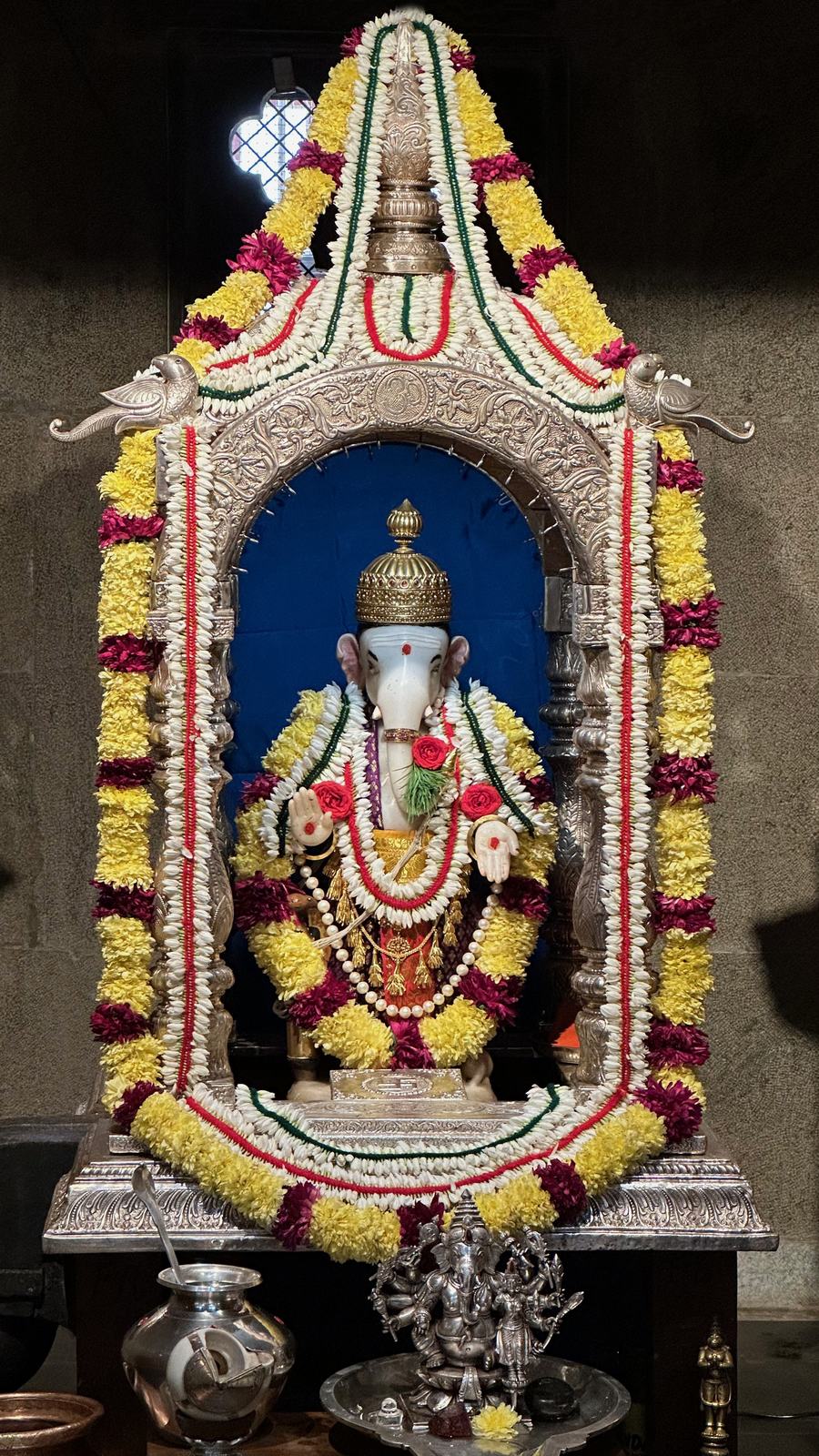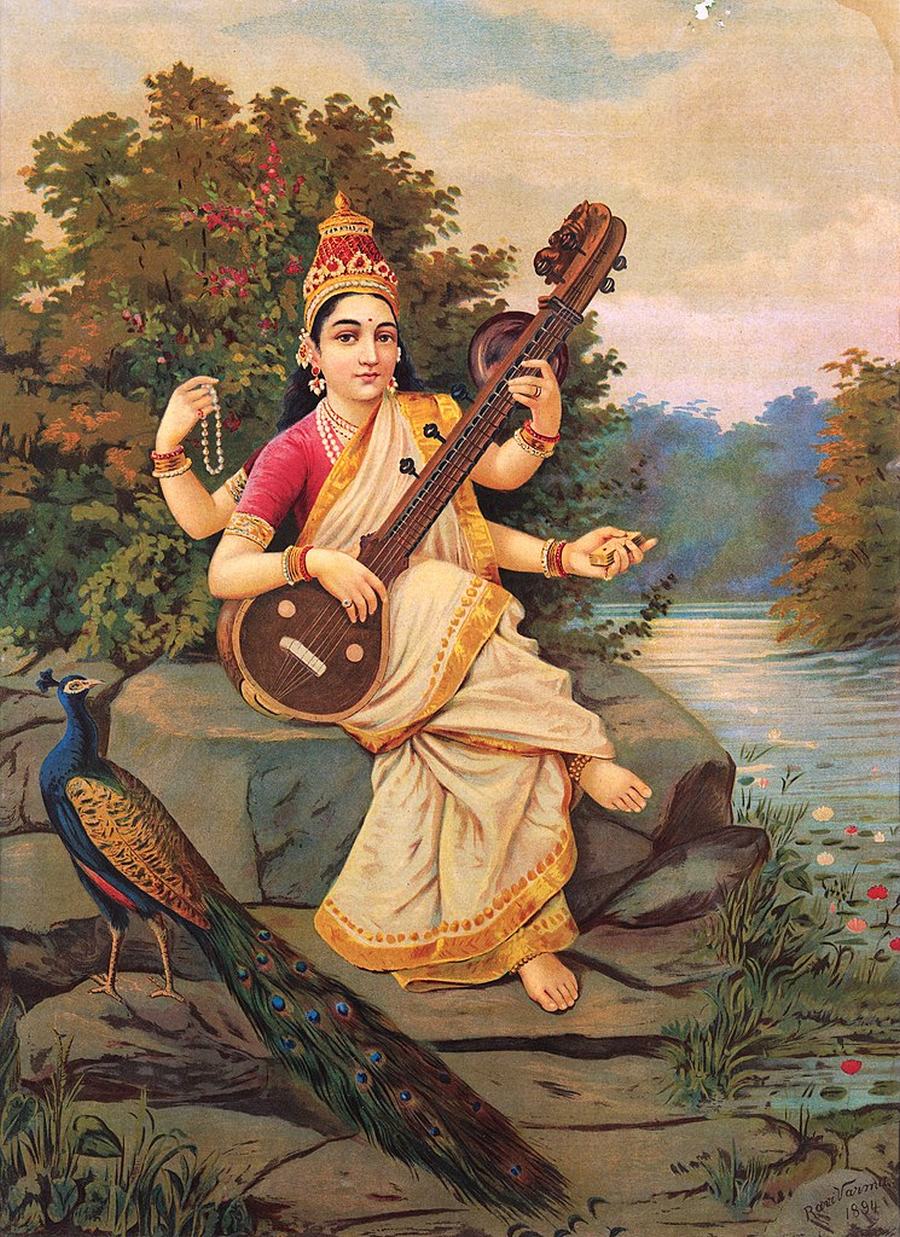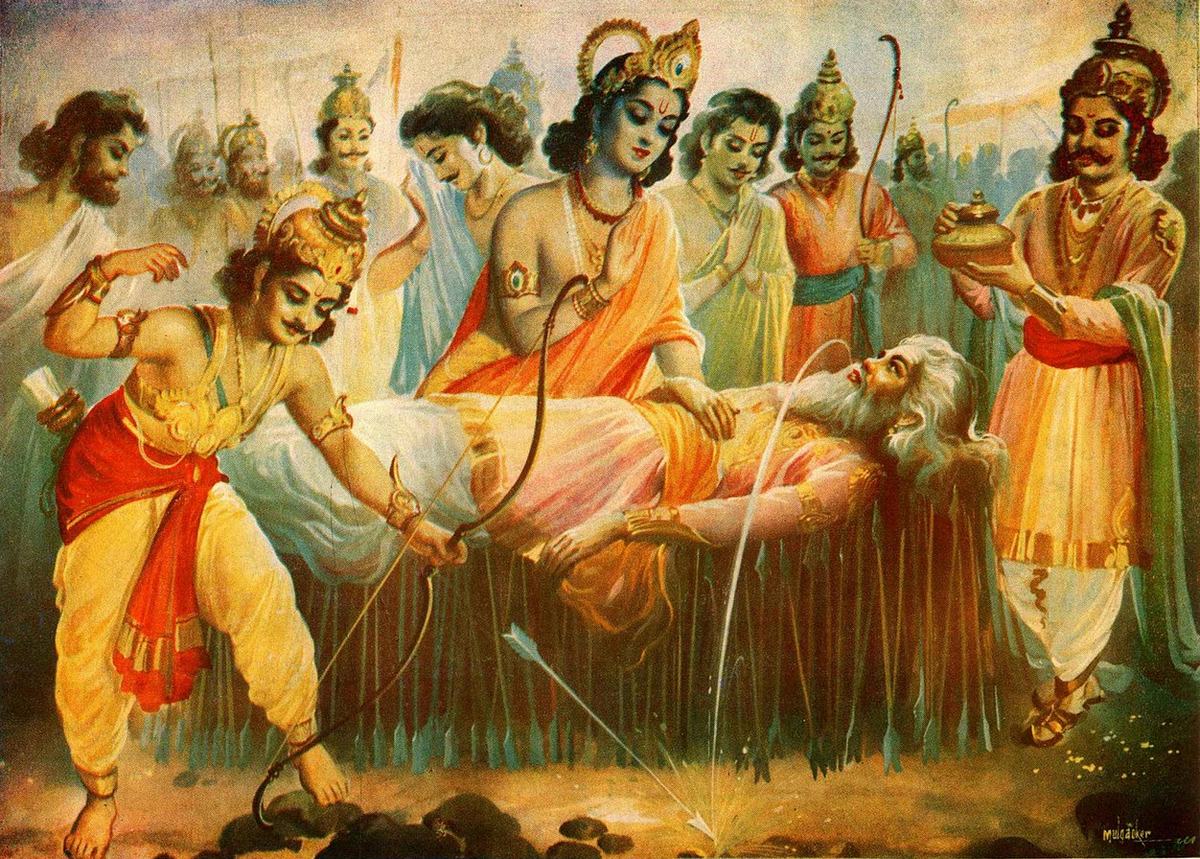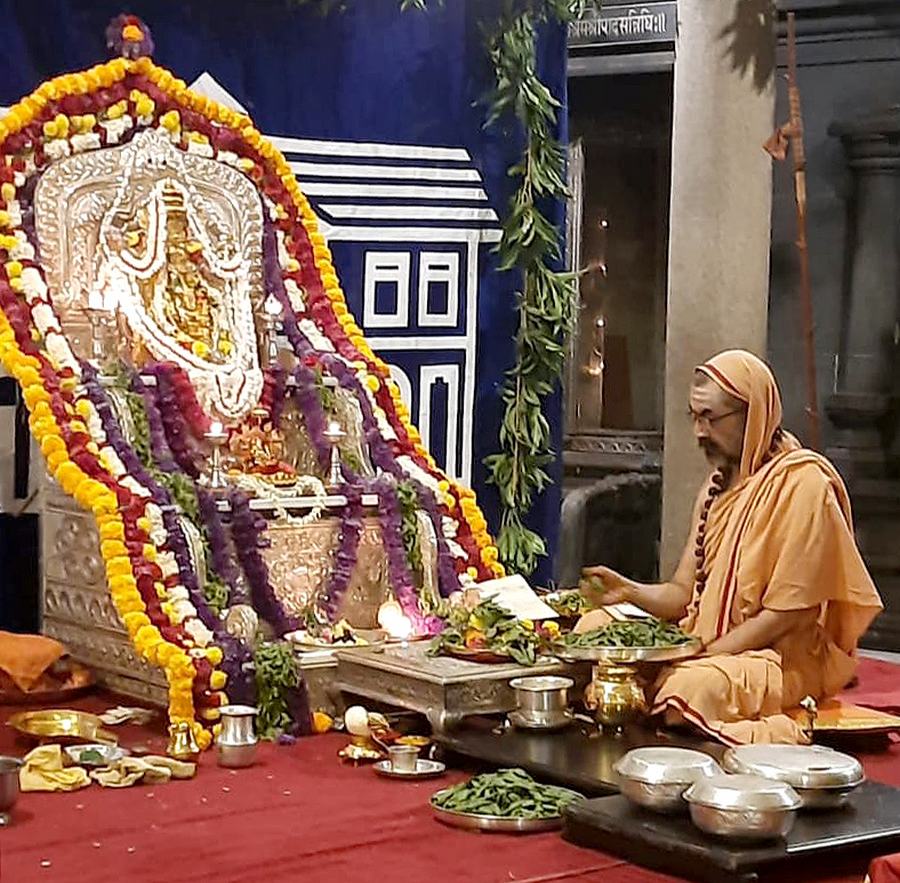Māgha Mhainŏ- A Month of Varied Festivities
An auspicious month, the Māgha Māsa has festivals that range from the austere to the celebratory writes Smt. Beenā Savkūr
The sun starting its sojourn towards the Northern Hemisphere marks the beginning of the Māgha Māsa, the eleventh month of the Hindū calendar year. It corresponds to January/February in the Gregorian calendar.
Māgha Māsa is considered an auspicious time for performing major ceremonies like weddings, Brahmopadesham (thread ceremony), house warmings, etc. Just like the lighting of lamps is considered auspicious during Kārtika Māsa, Māgha Snānam (dip in holy rivers) is the major ritual of Māgha Māsa. During this period, people bathe before sunrise, preferably during Aruṇodaya kāla in a river, lake or tīrthakshetra. ͟ A special arghya is given to Lord Mādhava and Sun God after this Māgha Snānam.
Significance of Māgha Snānam
The cold weather that precedes the Māgha Māsa may have affected some people, adversely causing weakness, body aches, etc. Since the sun’s rays are more intense during Māgha Māsa and sea water contains common salt which is a cleanser, our sages probably prescribed that one should perform Samudra Snānam for a period of one Ghaḍiya (48 minutes). This would bring the benefit of cleansing and re-energising our body.
Religious events during Māgha Māsa
There are many religious events during this month, some austere, others celebratory.
• Gaṇesha Jayantī

Literally "Gaṇesha's birthday", Gaṇesha Jayantī is also known as Tilakunda Chaturthī and Varada Chaturthī. This occasion celebrates the birthday of Gaṇesha, the lord of wisdom and is a popular festival particularly in the states of Mahārās͟hṭra and Goā. It is celebrated on Shukla Paks͟ha Chaturthī in the month of Māgha.
During this festival, devotees make an idol of Gaṇesha with turmeric (haldī) or vermillion (sindūr). This idol is later submerged in water. Devotees perform pūjā-s and observe fasts. It is believed that when one prays to Lord Gaṇesha on this day, all prayers are answered and the year ahead will be filled with peace and prosperity.
• Māghī Navarātri
Apart from the popular Shāradīya and Chaitra Navarātri, people across the country also celebrate two Gupta Navarātri-s - the Māgha Gupta Navarātri and Ᾱs͟hād͟ha Gupta Navarātri - with great zeal and pomp. During these two Navarātri-s, those interested in “Tāntrik Sadhanā” used to worship the Dasha Mahāvidya-s of Devi, with emphasis on secret rituals, hence they are called ‘Gupta Navarātri-s'. Māgha Gupta Navarātri, celebrated from Pratipadā till Navamī in the Shukla Paks͟ha of Māgha Māsa, is a nine-day festival honouring the nine manifestations honouring the Dasha Mahāvidyā-s of Shaktī, the mother Goddess.
If for some reason a family is not able to offer their annual Pūjā as per the Saṅkalpa to the Devī on ghaṭasthāpanā during Shāradīya Navarātri, this vrata can be performed during Māgha Navarātri. Similarly, if any Suvāsinī was unable to offer Vāiṇa pūjā to Gowrī during Tayī on Bhādrapada Tṛtīyā it can be offered during Māgha Navarātri.
• Māgha Shukla Tṛtīyā
Māgha Shukla Tṛtīyā is observed in Shrī Chitrāpur Mat͟h as the Samārādhanā Divasa of H.H. Shrīmat Shaṅkarāshram Swāmījī II. The Divine Sannidhi of Pūjya Swāmījī is at Gurumat͟h, Mallāpur.
• Vasanta Pañchamī
 Vasanta Pañchamī or Shrī Pañchamī is celebrated on the fifth day of the Shukla Paks͟ha in Māgha Māsa, and marks the first day of spring. Goddess Saraswatī, the presiding deity of Aks͟hara Jñāna, the female Divine energy of Learning, Knowledge and Wisdom is said to have been born on this sacred day.
Vasanta Pañchamī or Shrī Pañchamī is celebrated on the fifth day of the Shukla Paks͟ha in Māgha Māsa, and marks the first day of spring. Goddess Saraswatī, the presiding deity of Aks͟hara Jñāna, the female Divine energy of Learning, Knowledge and Wisdom is said to have been born on this sacred day.
Dedicated to Vāk Devī (Goddess Saraswatī), this day is considered to be auspicious especially for Aks͟harābhyāsa (initiating a child into education).
Goddess Saraswatī is worshipped on this day to rid ourselves of sluggishness, lethargy and ignorance. Traditionally, Brāhmin-s are honoured by inviting them to the homes of the Yajamāna and are offered food specially cooked for the festival.
Pitṛ-tarpaṇ (Ancestor worship) is performed, the God of love- Kāmadeva - is worshipped and many educational institutions organise special prayers for Saraswatī.
Wherever prayers are thus organised, the colour yellow is prominent in use as it symbolizes knowledge, understanding, prosperity, optimism, energy and positivity. Idols of Saraswatī are adorned in yellow, people usually wear yellow clothes, and yellow-food is offered to the deity.
• Ratha Saptamī
 Ratha means chariot. Saptamī is a tithi in a lunar month corresponding to the seventh day of both Shukla and Kṛs͟hṇa paks͟ha-s. It is considered to be the birth anniversary of Sūrya Deva, who was born to sage Kashyapa and Aditi.
Ratha means chariot. Saptamī is a tithi in a lunar month corresponding to the seventh day of both Shukla and Kṛs͟hṇa paks͟ha-s. It is considered to be the birth anniversary of Sūrya Deva, who was born to sage Kashyapa and Aditi.
On this day of Ratha Saptamī, the movement of the Sun towards the Northern hemisphere is believed to take definite effect, entering Makara Rāshi on Makara Saṅkramaṇa Day. Traditionally, it is regarded as the day on which the chariot of the Sun God drawn by seven horses, is diverted towards the north-east direction by his charioteer Aruṇa, thus heralding spring.
The characteristic of the Chariot of Sūrya Deva is said to be that it has only one wheel, representing the kāla-chakra (wheel of time) and seven horses represent the seven colours of light (VIBGYOR). It is also believed that the seven horses represent the seven days of a week. The wheel is known as Saṁvatsara - Sūrya Deva stays one month in each Rāshi (Zodiac sign) and takes 365 days or 12 months to complete a round of the 12 Rāshi-s.
On this day, people take a traditional bath with seven Arka leaves, placing one leaf on the head, two on the shoulders, two on the knees and two on the feet. Arka is commonly called as Jilleḍu in Telugu, Ekka in Kannada, Erukku in Tamil, and Calotrope (bowstring hemp) in English.
In the traditional homes of Chitrāpur Sāraswat Brāhmin-s, a lamp is made out of poinya (stem of arecanut leaf) and a dīpa is lit in it near the Tulasī kaṭṭŏ. Also, a dīpa is lit on an Arka leaf and Arka tarpaṇa is done in a lake or pond by placing it in the water.
Ratha Saptamī holds a special significance for the Chitrāpur Sāraswat Samāja as it is also our Guru Prāpti Diwasa - the day that H.H. Shrīmat Parijñānāshram Swāmījī I arrived at Kot̄ītīrtha, Gokarṇa after intense tapascharyā and prayers by our ancestors. On this day, vishes͟ha sevā/pūjā is offered at Shirālī Mat͟h.
• Bhīs͟hmās͟hṭamī
Māgha Māsa has numerous days dedicated to Bhīs͟hma in various regions of India. Some of the important ones are Bhīs͟hma As͟hṭamī, Bhīs͟hma Dwādashī and Bhīs͟hma Ekādashī. Bhīs͟hmās͟hṭamī as the name signifies is also associated with Bhīs͟hma Pitāmaha, the most revered character of the great Epic, Mahābhārata. It was on this day that Bhīs͟hma breathed his last and is commemorated as the day of his Nirvāṇa. Bhīs͟hmās͟hṭamī occurs on the eighth day (As͟hṭamī) of the bright fortnight (Shukla Paks͟ha) in Māgha Māsa, the day after Ratha Saptamī.
• Bhīs͟hma Ekādashī

The popular belief is that the Vis͟hṇu Sahasranāma Stotram (thousand names dedicated to Lord Vis͟hṇu) was revealed to the Pāṇḍavā-s on this day by Bhīs͟hma, while lying on a bed of arrows after the Great War in the Mahābhārata and in the presence of Lord Kṛs͟hṇa, who is an incarnation of Lord Vis͟hṇu.
• Vardhantyutsava - Māgha Shukla Navamī is also the day we celebrate the Vardhantī-s of Shrīvallī Bhuvaneshwarī Sannidhi, Shrī Mahāgaṇapti Sannidhi, Shrīmat Ᾱdya Shaṅkarāchārya Sannidhi, Shrī Gurupādukā Sannidhi, Shrī Rāmāñjaneya Sannidhi, and Ks͟hetrapāla Sannidhi at Shrī Chitrāpur Mat͟h Shirālī. On this auspicious occasion, a five-coconut Gaṇahoma is offered at Shrī Mahāgaṇapti Sannidhi. Dwādasha Kalasha Kalābhivṛddhi is offered at Shrīvallī Bhuvaneshwarī Sannidhi, Shrī Mahāgaṇapti Sannidhi, Shrīmat Ᾱdya Shaṅkarāchārya Sannidhi, H.H. Shrīmat Parijñānāshram Swamījī III Pādukā Sannidhi and Shrī Rāmāñjaneya Sannidhi. Sādhaka-s from all-over participate in these celebrations with love and devotion.
• Māgha Shukla Trayodashī
Vardhantī of Shrī Subrahmaṇya Sannidhi at Umāmaheshwara Devasthāna, Maṅgal̄ūru is celebrated on Māgha Shukla Trayodashī.
• Māgha Pūrṇimā
The full moon day in Māgha māsa is celebrated as Mahā Māghī. This day marks the end of Māgha Snāna vratam. It is believed that any divine worship, prayer, charity or rites performed on this day is highly meritorious and gives significant spiritual results. Taking a bath in the sea on this day is considered especially beneficial.
• Māgha Kṛs͟hṇa Tṛtīyā
Vardhantī of Shrī Veṇugopāl Sannidhi at Shrī Chitrāpur Mat͟h, Maṅgal̄ūru is celebrated on Māgha Kṛs͟hṇa Tṛtīyā.
• Māgha Kṛs͟hṇa Pañchamī
An extremely significant and special day for the Chitrāpur Sāraswat Samāja, Māgha Kṛs͟hṇa Pañchamī is celebrated as the Paṭṭābhis͟heka Vardhantī – The Ordination Day of H.H. Shrīmat Sadyojāt Shaṅkarāshram Swāmījī. On this day (27th February) in the year 1997, in the presence of Yativara Jagadguru Shaṅkarāchārya of the Sriṅgerī Pīt͟ha and Parama Pūjya Nārāyaṇāshram Swāmījī, H.H. Sadyojāt Shaṅkarāshram Swāmījī ascended the sacred Pīt͟ha as the 11th Mat͟hādhipatī of Shrī Chitrāpur Mat͟h. Sādhaka-s celebrate this momentous occasion by offering Pādukā pūjana and Bhiks͟hā Sevā to our revered Guru, and eagerly look forward to Pūjya Swāmījī’s Amṛtvāṇī – Āshīrvachana.
• Māgha Kṛs͟hṇa S͟has͟ht͟hī
Vardhantī-s of H.H. Shaṅkarāshram I Swāmījī Sannidhi and H.H. Keshavāshram Swāmījī Sannidhi are observed at Shrī Chitrāpur Mat͟h, Shirālī on the sixth day of the Kṛs͟hṇa Paks͟ha of Māgha Māsa.
• Mahā Shivarātri
 Dedicated to Lord Shiva, Mahāshivarātri is observed from nightfall of the 13th day to the dawn of the 14th day of the Kṛs͟hṇa Paks͟ha in Māgha Māsa. Worshipping Lord Shiva on this day of Mahā Shivarātri is considered especially beneficial for spiritual progress.
Dedicated to Lord Shiva, Mahāshivarātri is observed from nightfall of the 13th day to the dawn of the 14th day of the Kṛs͟hṇa Paks͟ha in Māgha Māsa. Worshipping Lord Shiva on this day of Mahā Shivarātri is considered especially beneficial for spiritual progress.
Special celebrations are held at Shiva Ks͟hetra-s where lakhs of people gather to offer their obeisance and salutations to Lord Shiva, the great destroyer of sins and the most benevolent God. We, Chitrāpur Sāraswat-s look forward to participating in the Chār Yāma Pūjana performed by H.H. Swāmījī on Mahāshivarātri.
At Shirālī, Lord Bhavānīshaṅkar is brought out at night in the Sabhāgṛha, for offering the Chār Yāma Pūjana. The Chār Yāma Pūjana lasts the whole night, beginning from around 10 p.m. and concluding around 6 a.m. the next morning, after Teerth Vitarana by Parama Pūjya Swamījī
In addition to being a religiously significant month, Māgha māsa marks the beginning of the spring season when nature starts blooming once again with the growth of fresh, new leaves and flowers all around-a time of the year that many people enjoy and look forward to.
Resources:
Shrī Keshav Sorāb; Wikipedia; inidanmandirs.blogspot.com, hindupad.com; Utsava - Parijñā Publication; Shrī Chitrāpur Mat͟h Calendar.)
Photos and illustrations: https://commons.wikimedia.org licensed under CC BY-SA, CC BY, CC BY-ND, CC BY-SA
